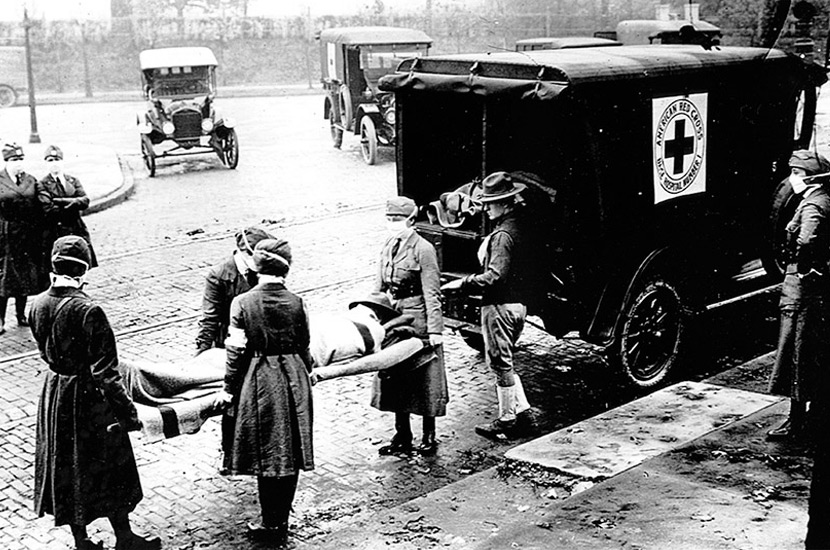The COVID-19 death toll just surpassed another historic American milestone
The disease has now killed more Americans than the 1918 influenza pandemic—and experts predict another 100,000 will die from COVID by the end of the year.

Until now, the US Centers for Disease Control and Prevention cited the 1918 influenza pandemic as the most severe pandemic in modern history. About 50 million people worldwide lost their lives to that flu, including 675,000 people in the US.
Now, COVID-19 has overtaken the 1918 influenza as the most devastating pandemic for American lives. As of Tuesday, 676,347 people in the US have died from SARS-CoV-2 infection, according to John Hopkins University’s Coronavirus Resource Center—and the COVID-19 pandemic is still far from over. According to the CDC, the country is still averaging about 1,350 deaths per day, and the approaching second winter of the pandemic may bring another surge to the already huge death toll.
“A lot of the mistakes that we definitely fell into in 1918, we hoped we wouldn’t fall into in 2020,” Harvard epidemiologist Stephen Kissler told CNN. “We did.”
Social distancing, or a lack thereof, was a huge factor in both pandemics. CNN explains that cities like Philadelphia and San Francisco that opened up and held parades to celebrate a lull in influenza cases back in 1918 mounted higher death counts than cities like St. Louis that stayed shuttered and cautious. Likewise, countries around the world with stricter isolation requirements fared better with COVID-19, especially in the early days of the pandemic.
There was also no vaccine for influenza in 1918. Today, with COVID-19, we have the benefit of science and pharmaceutical know-how, and yet large swaths of America remain unvaccinated. About 36 percent of eligible vaccine recipients have not received all their shots, according to the CDC, and rates of vaccination have stalled. Gizmodo noted that in July, the US seemed ahead of the global curve, with the 18th highest vaccination rate worldwide. But the country has been lagging and has since dropped to 40th place as of last week.
While the US has surpassed its 1918 influenza death toll in absolute numbers, the country’s population at the time was just one third of what it is today—meaning the 1918 flu took out a greater proportion of the nation. While coronavirus has killed 1 in 500 people in the US so far, the 1918 influenza pandemic killed about 1 in 150.
Of course, the COVID-19 pandemic is far from over. According to NPR, a University of Washington model projects that another 100,000 or so people in the US will die from the coronavirus by the end of the year, putting the projected total death count at about 775,000 by January 1, 2022. COVID-19 has taken more than 4.7 million lives worldwide, placing US deaths at about 14 percent of the global death toll, despite the country representing just over 4 percent of the world’s population.
Experts theorize that COVID-19 might eventually become a seasonal disease, much like the flu is today. But there’s no guarantee we will get there, especially if human immunity on a community level, either through vaccination or infection, doesn’t continue to strengthen, reports NPR.
While there are parallels between the COVID-19 and influenza pandemics, epidemiologists told STAT News that there are too many new variables, like the advent of vaccines and life-saving machines like ventilators, to make true comparisons. “We have no idea what would have been the impact of COVID-19 without interventions,” infectious disease epidemiologist Cécile Viboud acknowledged.
“The truth is we have no historical precedent for the moment we’re in now,” wrote University of Michigan medical historian Howard Markel for The Atlantic. “We need to stop thinking back to 1918 as a guide for how to act in the present and to start thinking forward from 2021 as a guide to how to act in the future.”
